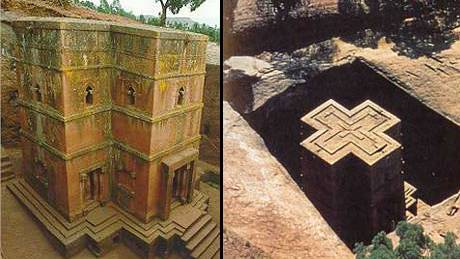The Amazing Monolithic Churches of Ethiopia - The Lalibela
Source: news.softpedia.com
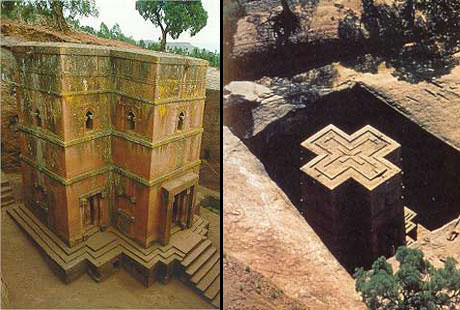
Christianity rooted in Ethiopia starting the 4th century. The kingdom of Aksum was at its peak. Ezana, the most illustrious king of this dynasty, chose as counselors two Syrian Christians, Frumentius and Aedesius. The first was invested bishop by the Saint Athanasius of Alexandria, and Aksum turned gradually into a Christian capital connected to the Coptic Church of Egypt. In the 7th century, Muslims conquered Egypt. The Christians of Ethiopia took refuge at Lesta, a mountainous region that made a natural defensive barrier, and placed their capital at Roha.
The Aksum dynasty was replaced, until the 12th century, by the Zagwe dynasty. Amongst the Zagwe neguses (kings), the most famous was Gebre Mesqel Lalibela (who reigned from 1189 to 1229 AD). Before becoming a king, Lalibela had a vision of a church that God demanded him to build. When he took the throne, he transformed his capital, which took his name, Lalibela, into a hidden holly fortress, buried into the ground. The best artisans and artists worked for decades at its edification, inside the mountains, carving and cutting into the stone blocks for realizing some of the most amazing monolith type sanctuaries in the world.
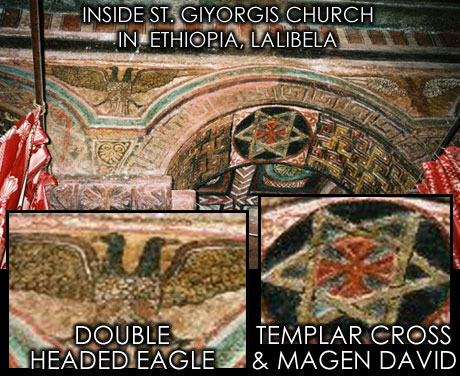
The churches of Lalibela are of three types: chapels built inside a grotto, cut into the wall of a cliff (or abrupt slope), and chapels cut into the ground. Most of them were cut into the ground. First, a quadrilateral groove was dug, then the inner side of the monolith block was emptied of stone. The church was always begun with the top side, by chiseling the roof. The carved stone was a rose-colored tuff. Even if missing a framework and concrete, these churches look like ordinary ones.
This impression is given by colonnades, buttresses, vaults, Roman archways and porticoes. Each element was projected before and cut into the mass of the rock block. A column started from its capital, not from its base.
Chapels are often adorned with frescoes reproducing scenes of the Old and New Testaments. The characters look stone-still, with wide open eyes, many blackened by the smoke of the candles.
All this subterranean edifices, located at an altitude of 2,000 m (6.600 ft), are connected through a labyrinth of corridors and stairs. The largest, so far discovered, is the church dedicated to Jesus: 33.7 m (112.3 ft) long, 23.7 m (79 ft) wide and 11.5 m (38.3 ft) tall. Surrounded by an external colonnade made of square posts, this church looks like a Greek temple. The front has some Roman borders. The interior has five nefs, one narthex, a sanctuary and a sacristy. The main nef has a vault carved like a cradle. The windows resemble hanging crosses.
Biet Mariam (The Church of Saint Mary) is, oppositely, richly decorated with stone roses, frescoes and arabesques, all vividly relating scenes of the Old Testament. Jesus is represented as the Sun. The windows look like Latin, Greek or swastika-like crosses.
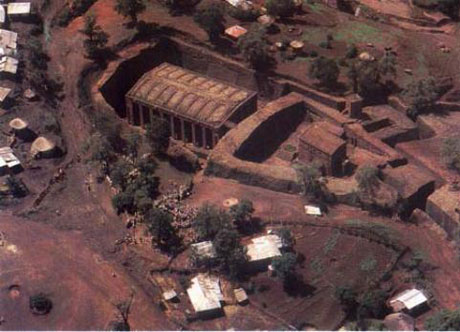
The most elegant is the church of Saint George, which has a cross shape and rose, greenish and yellowish hues. It is built like three joined Greek crosses. The inner side is like a cross, but lacking the pillar.
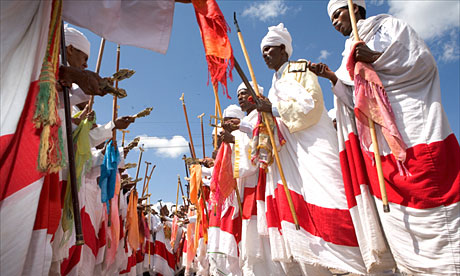
Even today, these churches host a big religious Ethiopian festivity called Timkat (the Showing of God). In the sound of drums and bells, in white-red clothes, a suite of dancing people surrounds the churches. The Ethiopian priests hold the specific bronze crosses. For the Ethiopian Christians this is like the second Jerusalem.
Article from: http://news.softpedia.com/news/The-Amazing-
Monolith-Churches-of-Ethiopia-82830.shtml

Priest at Lalibela, Ethiopia in St. Giyorgis Church (Bet Giorgis) - Note the Swastika (Sun Cross) inside the big Cross
